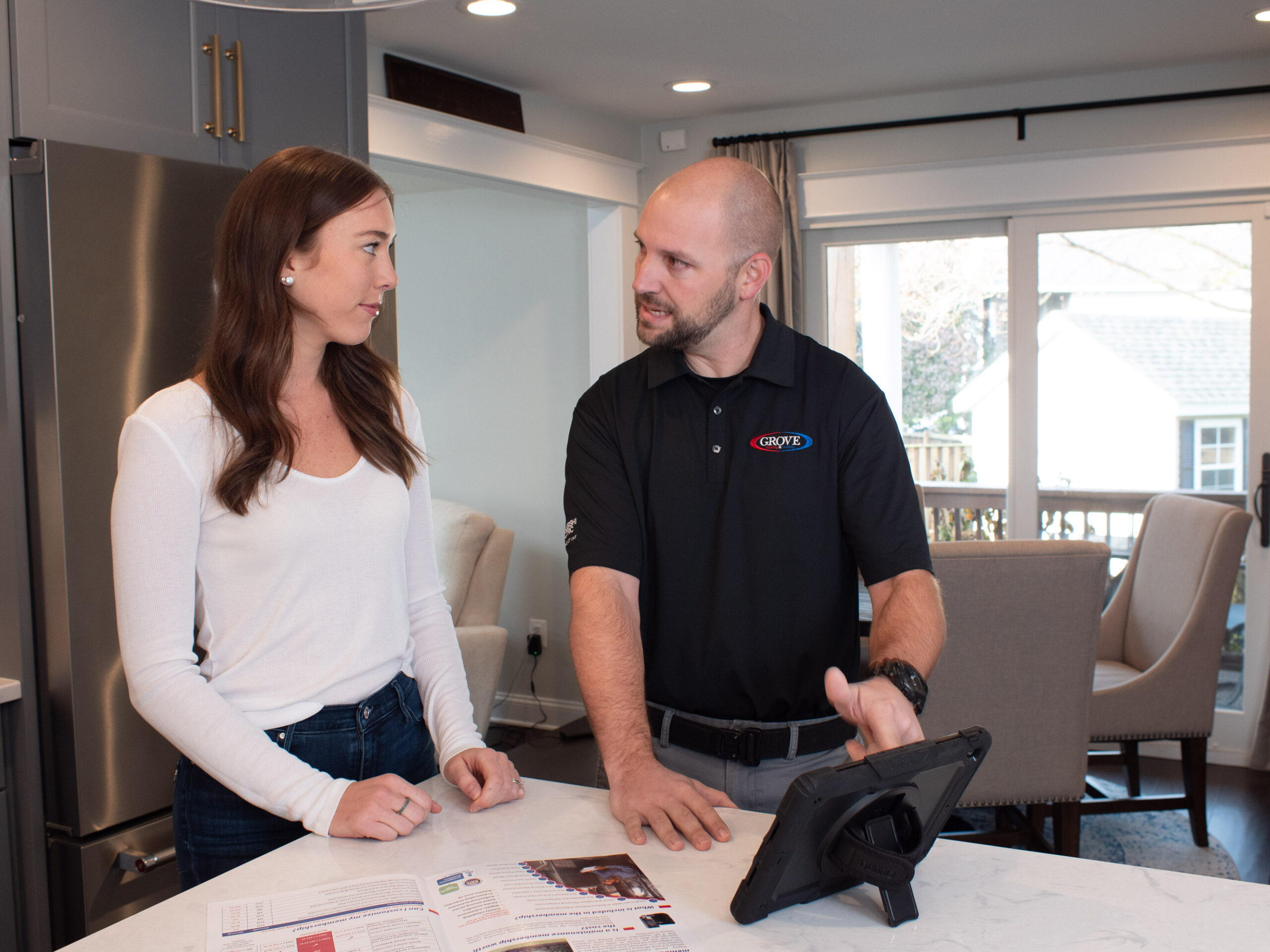When your air conditioner stops working, it’s easy to assume the worst—but not every cooling issue requires professional repair. Sometimes, the problem is something simple that you can fix yourself in just a few minutes. Before you schedule a service call, there are a few troubleshooting steps you can take that might get your AC back up and running without the need for professional help.
Grove Heating & Cooling understands the frustration of dealing with a malfunctioning air conditioner, especially in the heat of an Annapolis summer. We’ve put together this quick guide to help you identify and potentially fix minor AC problems on your own. From checking your thermostat settings to inspecting your air filter, a little troubleshooting can go a long way in avoiding unnecessary AC repair costs.

The first thing to check when your AC stops working is the thermostat. It may sound simple, but many cooling issues stem from incorrect thermostat settings or a drained battery. Start by making sure the thermostat is set to “cool” and that the temperature is set lower than the current room temperature.
If your thermostat is battery-powered, replace the batteries to rule out a power issue. If your thermostat is wired into your home’s electrical system, a blank display could indicate a power failure or a tripped circuit breaker. If your thermostat is programmable or smart, ensure that no scheduling conflicts or eco-mode settings are preventing the system from turning on.
After making adjustments, wait a few minutes to see if the AC kicks back on. If everything appears to be set correctly but the system still isn’t responding, it’s time to move on to the next troubleshooting step.
If your thermostat is set correctly and your AC still isn’t working, don’t worry—there are a few more troubleshooting steps you can try before calling for professional air conditioning repair.
Your AC system requires a steady power supply, and a tripped breaker could be the reason it won’t turn on. Locate your home’s electrical panel and look for the breaker labeled “AC” or “HVAC.” If it’s in the middle or “off” position, switch it fully off and then back on to reset it. If the breaker trips again after resetting, leave it off and call a professional, as this could indicate a deeper electrical issue.
A clogged or dirty air filter can block airflow, causing the system to struggle or even shut down to prevent damage. Check your filter by removing it from the intake vent or air handler. If it looks dirty or clogged, replace it with a clean filter. Ideally, air filters should be changed every 1-3 months to keep your AC running efficiently.
Air conditioners remove humidity from the air, and the moisture drains through a small pipe called the condensate drain line. If this line gets clogged, your AC may shut down as a safety precaution. Locate the drain line near the indoor unit and check for blockages. You can try clearing it by using a wet/dry vacuum to suction out any debris or by pouring a small amount of vinegar or warm water into the line.
Head outside and take a look at your AC’s outdoor condenser unit. Make sure it’s not covered in dirt, leaves, or debris, as these can restrict airflow and cause overheating. Also, listen for any unusual noises—if the fan isn’t spinning or the unit is making strange sounds, there could be a mechanical issue. If the unit appears dirty, gently rinse it with a garden hose (avoid using high pressure) to remove dust and debris.
To check if your AC fuses are blown, turn off the system and locate the disconnect box near your outdoor unit and carefully open it to access the fuses. Using a multimeter, set it to the continuity or resistance setting and test each fuse—if there’s no reading or the circuit doesn’t complete, the fuse is blown and will need to be replaced.
Blocked or closed vents can cause uneven cooling and make it seem like your AC isn’t working properly. Walk through your home and check that all supply and return vents are fully open and not blocked by furniture, curtains, or rugs. Proper airflow is essential for keeping your AC running smoothly.
After completing these troubleshooting steps, give your AC a few minutes to see if it starts working again. If it still won’t turn on or isn’t cooling properly, it’s time to call Grove Heating & Cooling for expert AC repair in Annapolis, MD. Our team is here to help with fast, reliable service when you need it most!
If your AC is running but not cooling, it’s a good idea to turn it off to prevent potential damage to the system. Continuing to run an air conditioner that isn’t cooling properly can strain the compressor, which is one of the most expensive components to replace. Turn the system off at the thermostat and circuit breaker, then call us to diagnose and fix the problem before turning it back on.
If you’ve gone through these troubleshooting steps and your AC still isn’t working, don’t wait—call Grove Heating & Cooling for expert AC repair in Annapolis. Our experienced technicians are ready to diagnose the problem and get your air conditioner back up and running quickly. Don’t suffer through the heat—contact us today for fast, reliable service you can trust!
